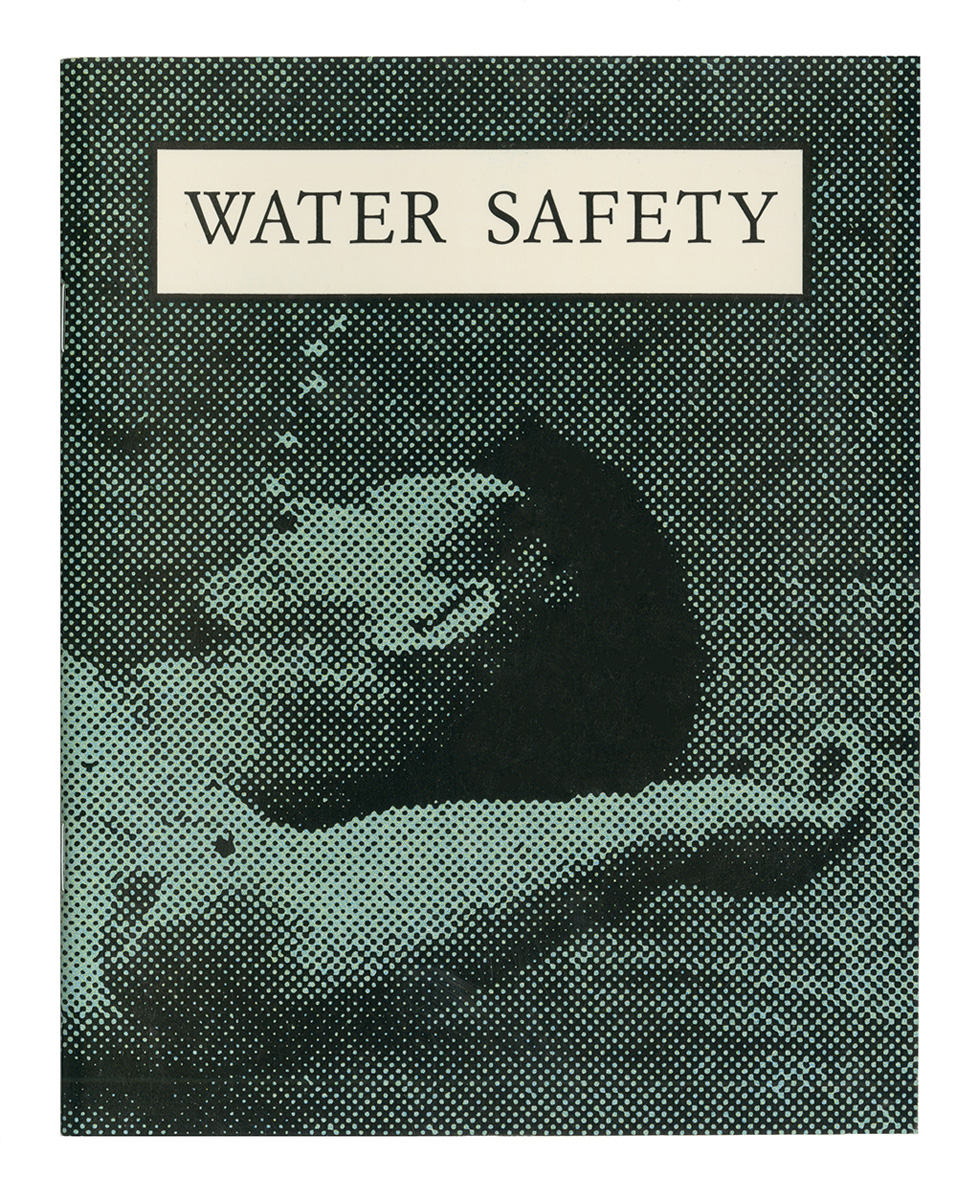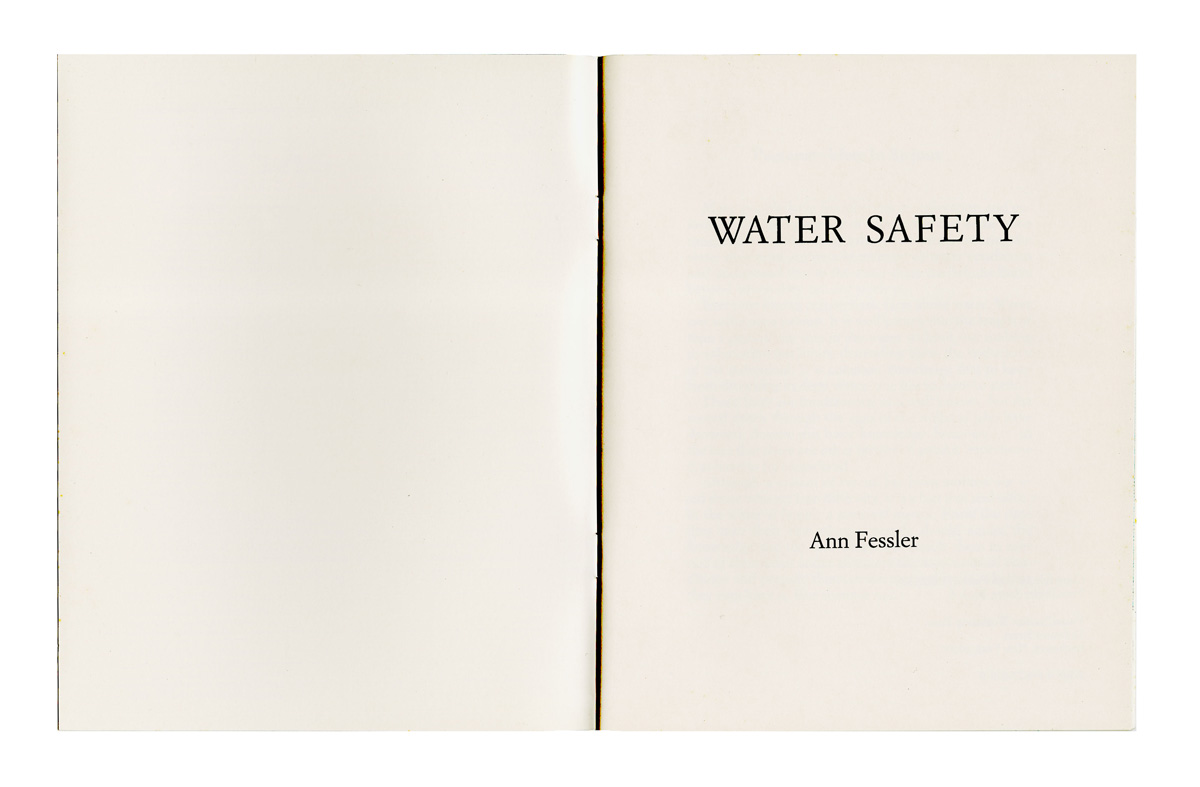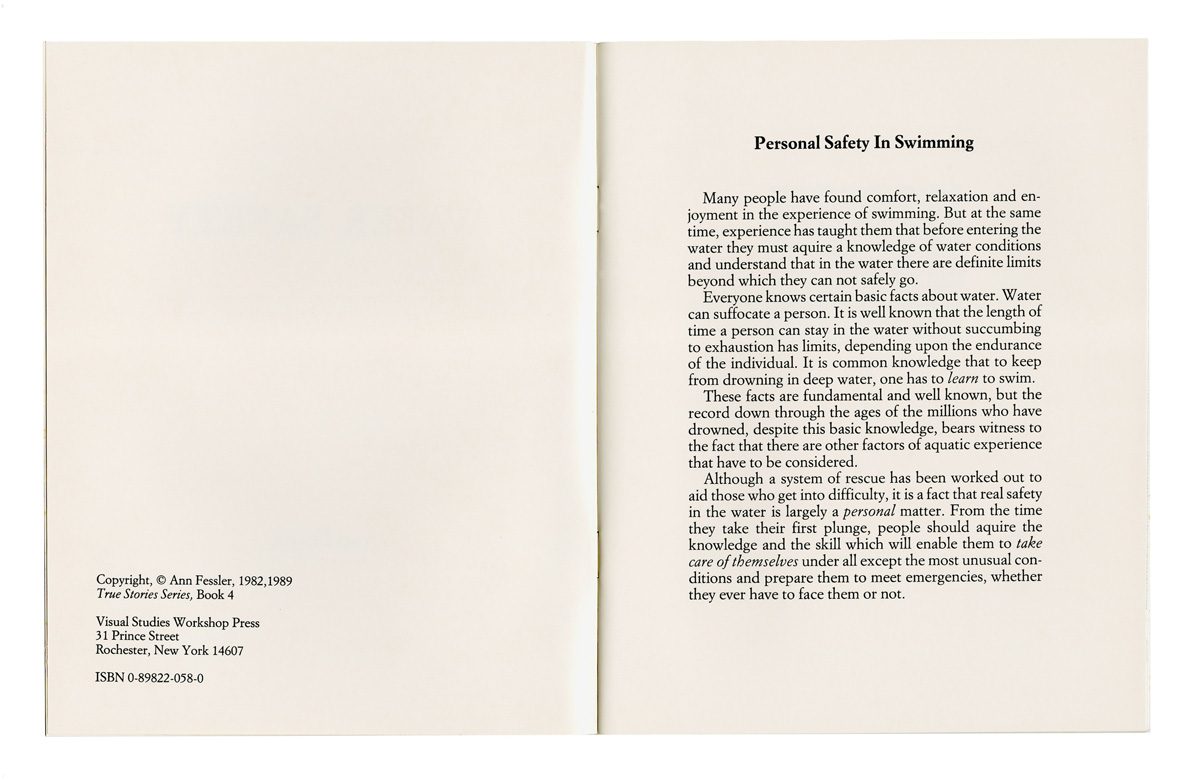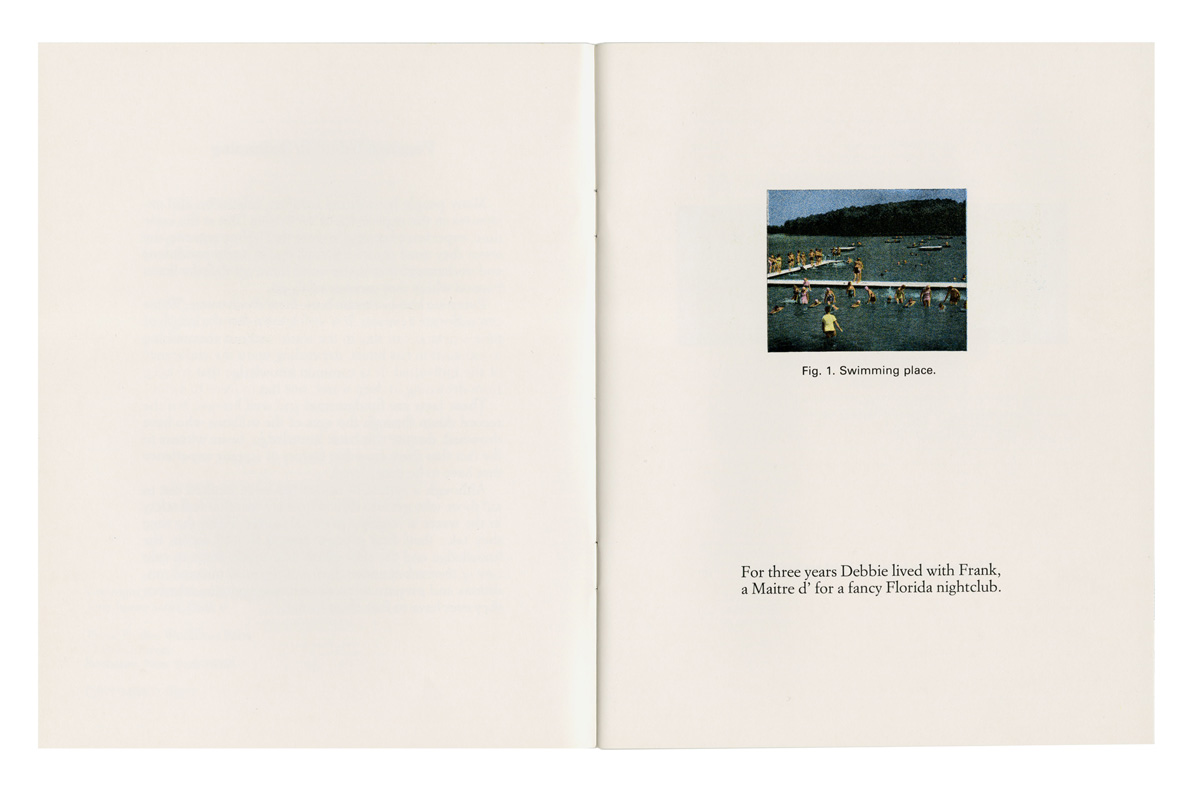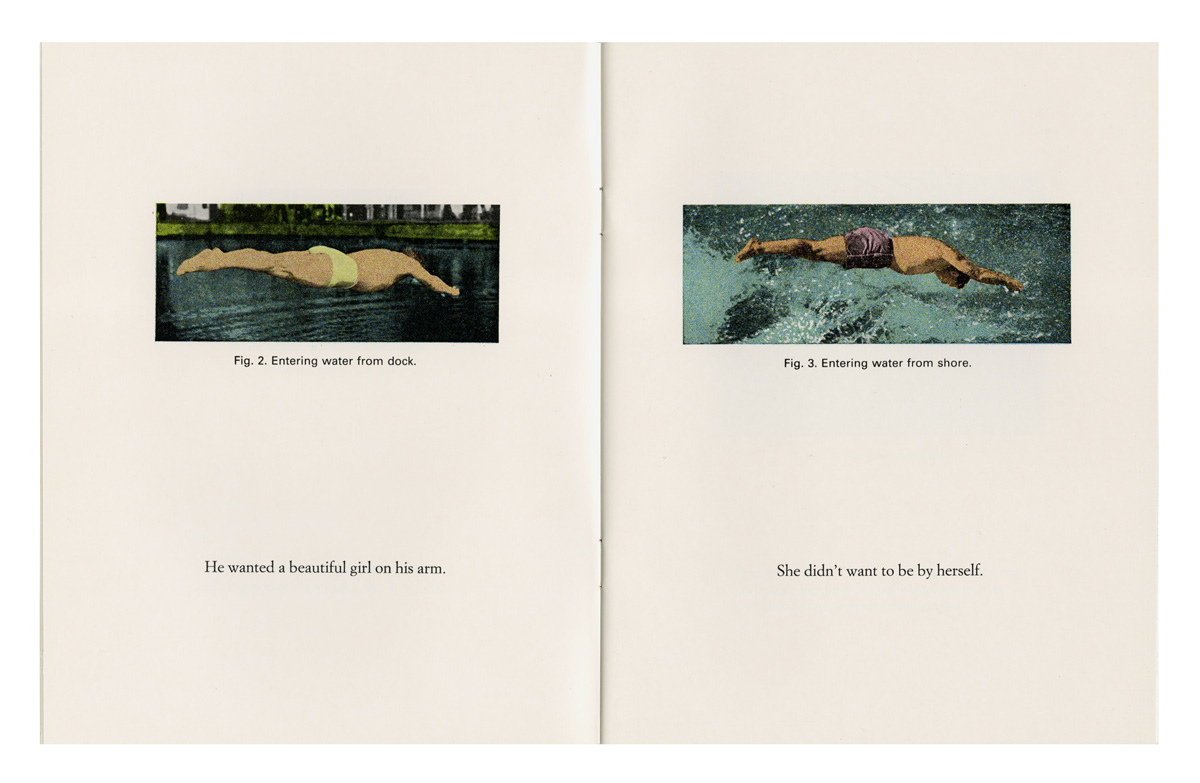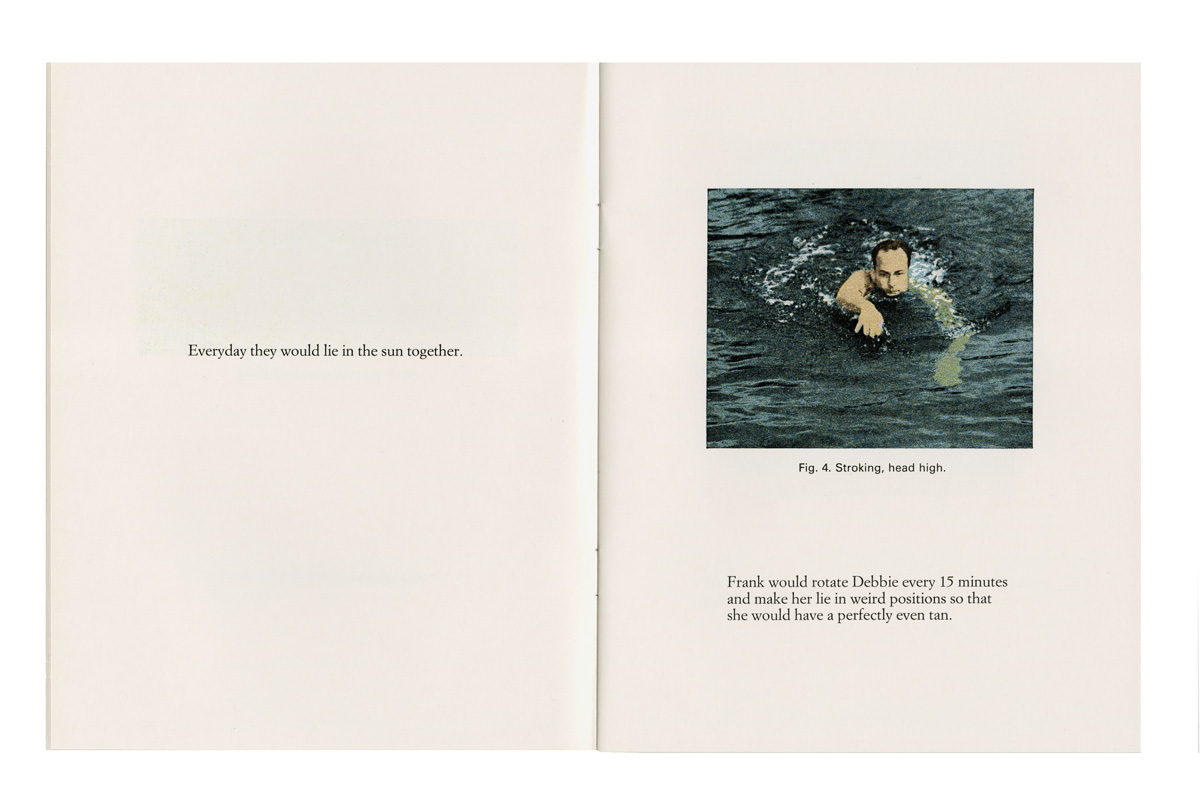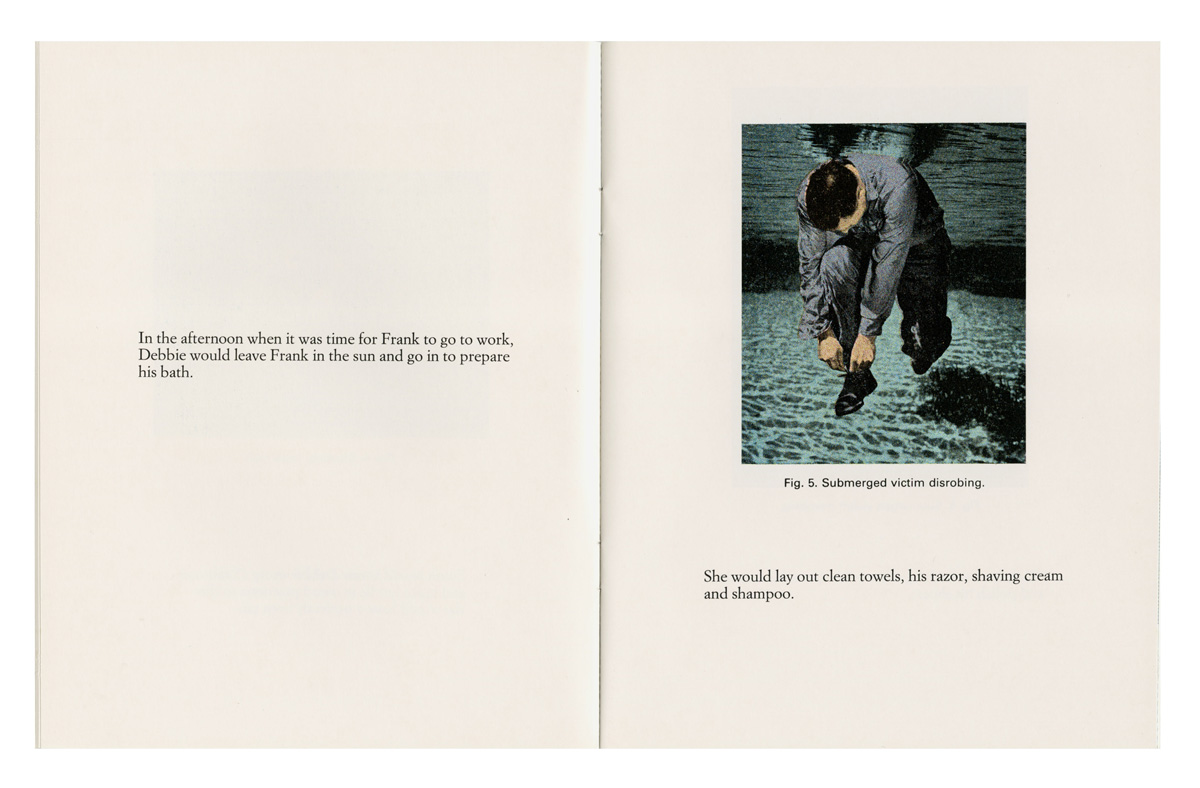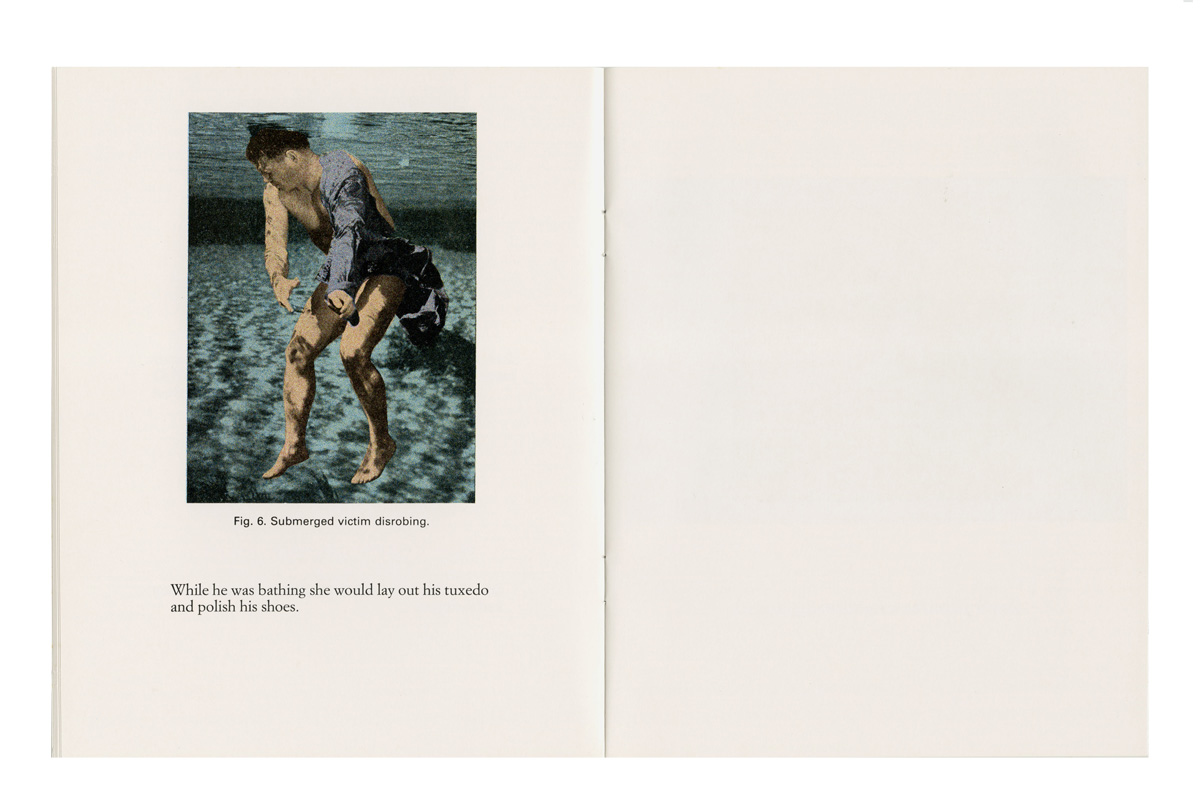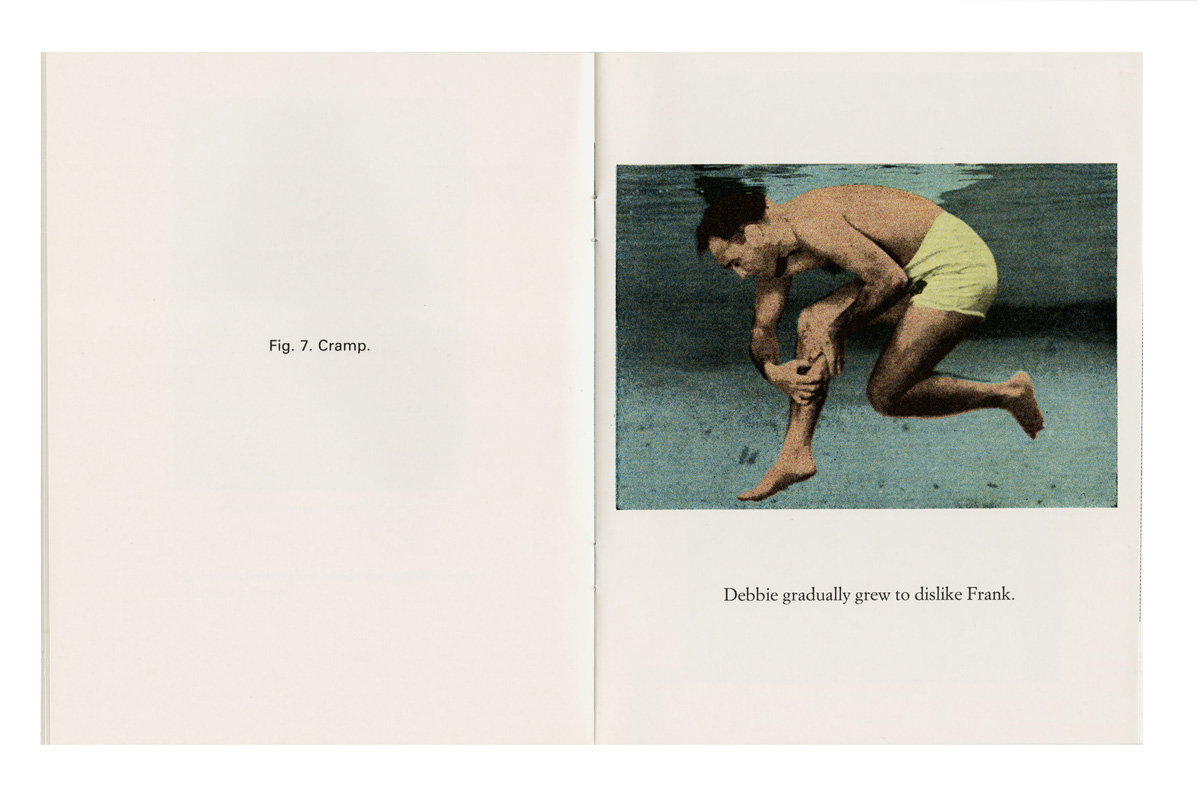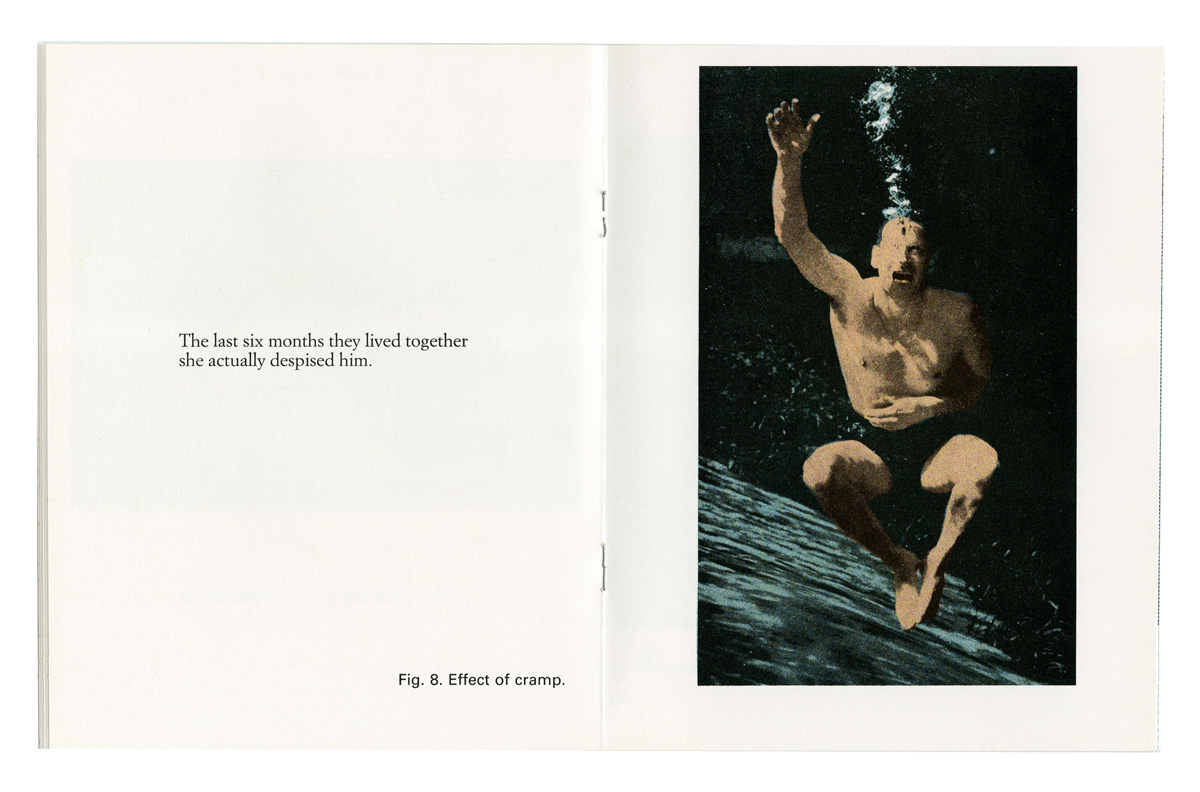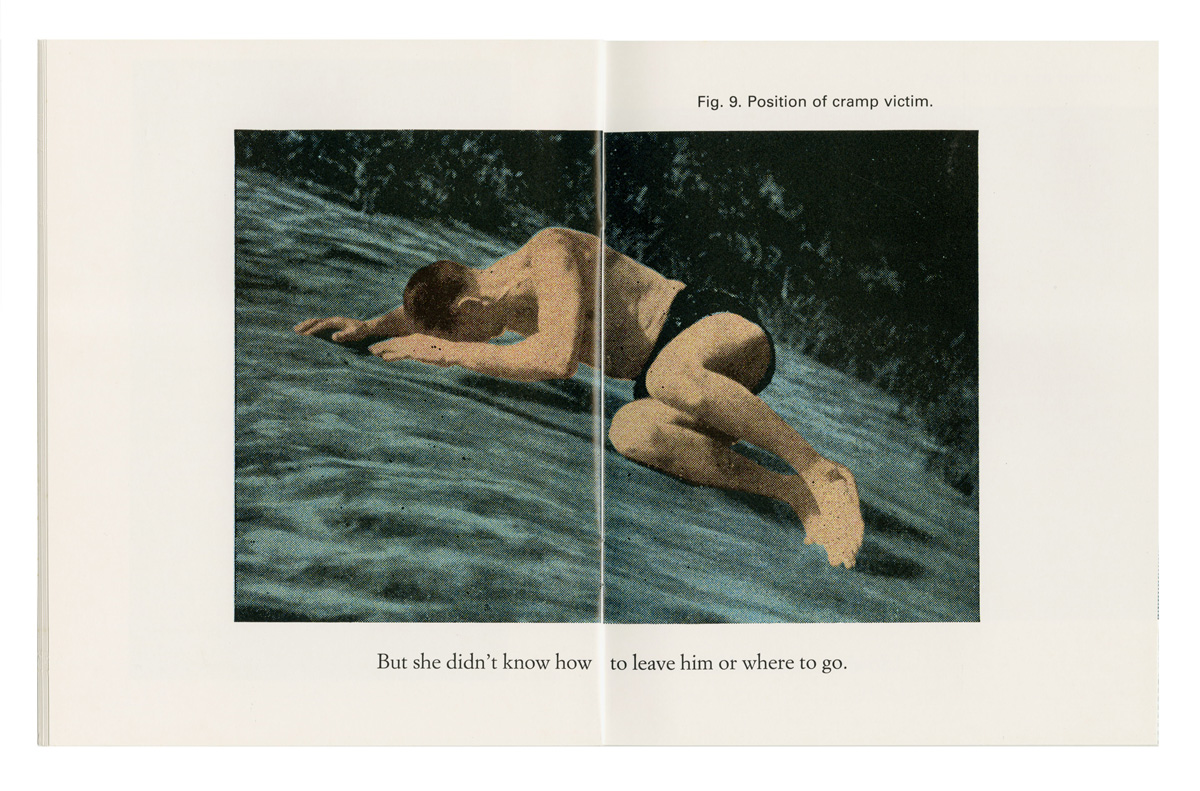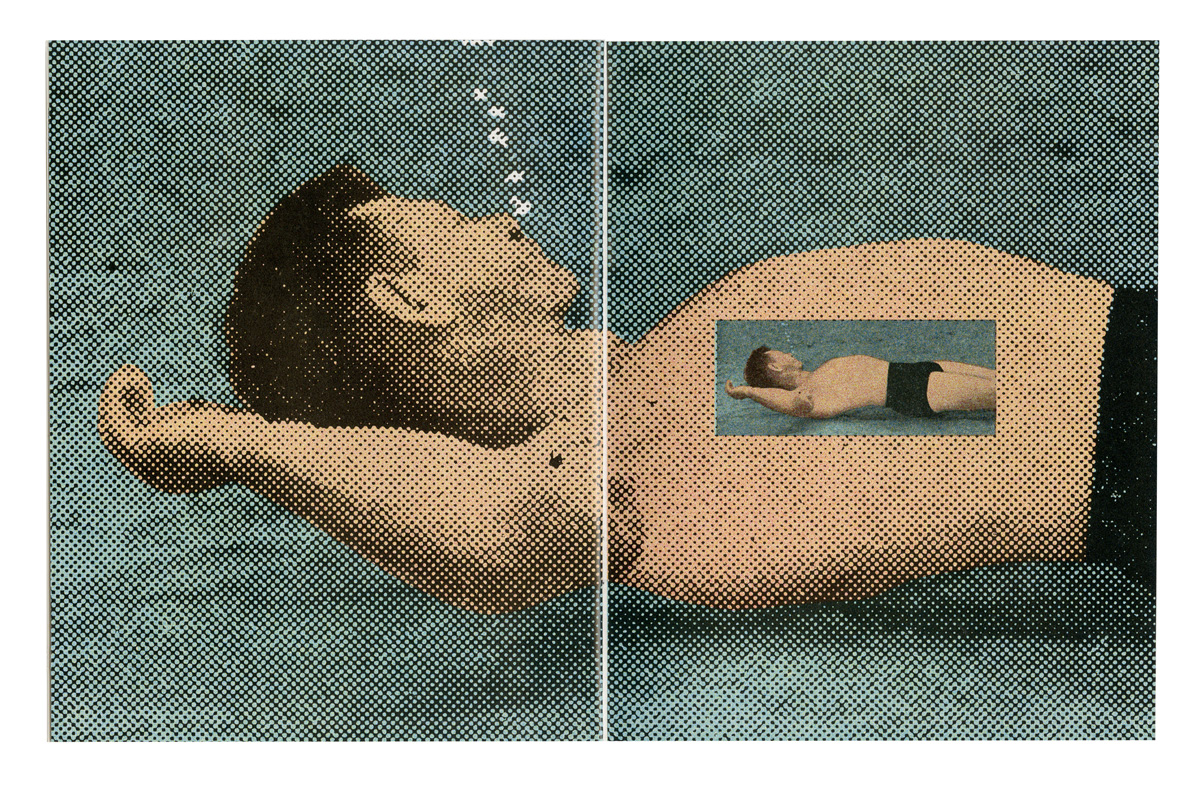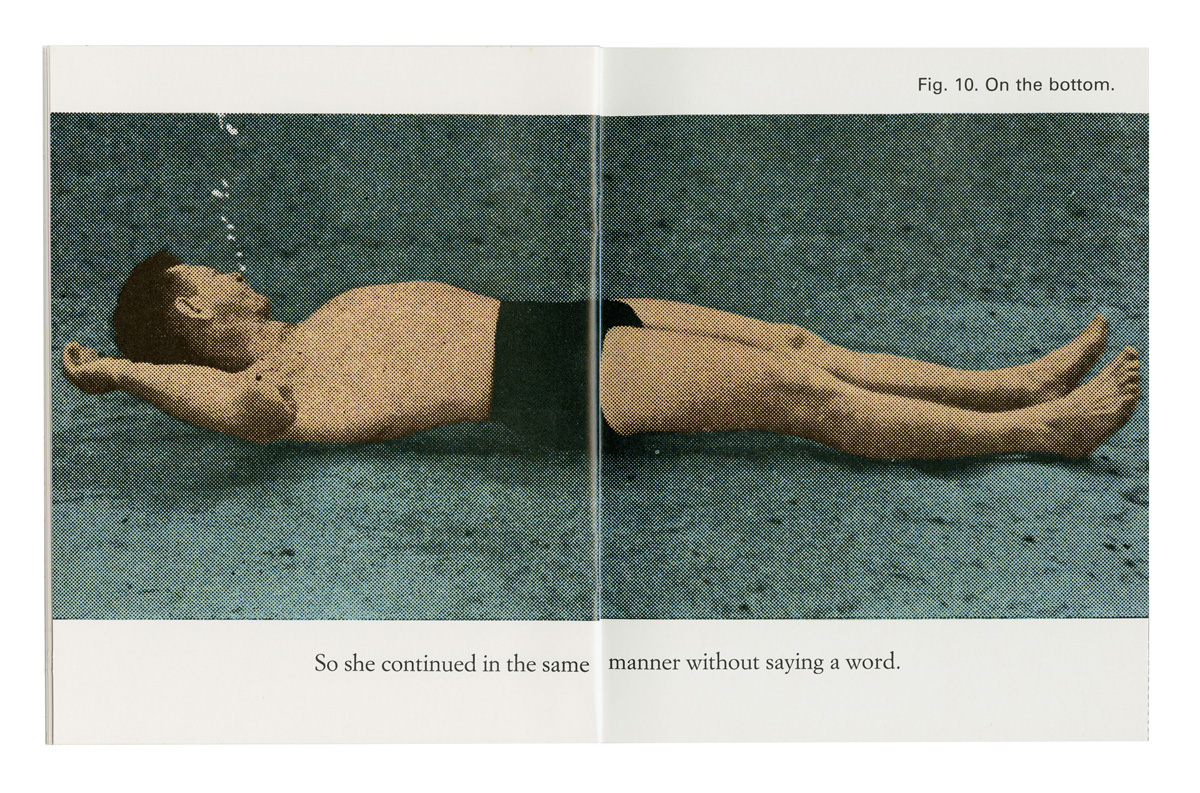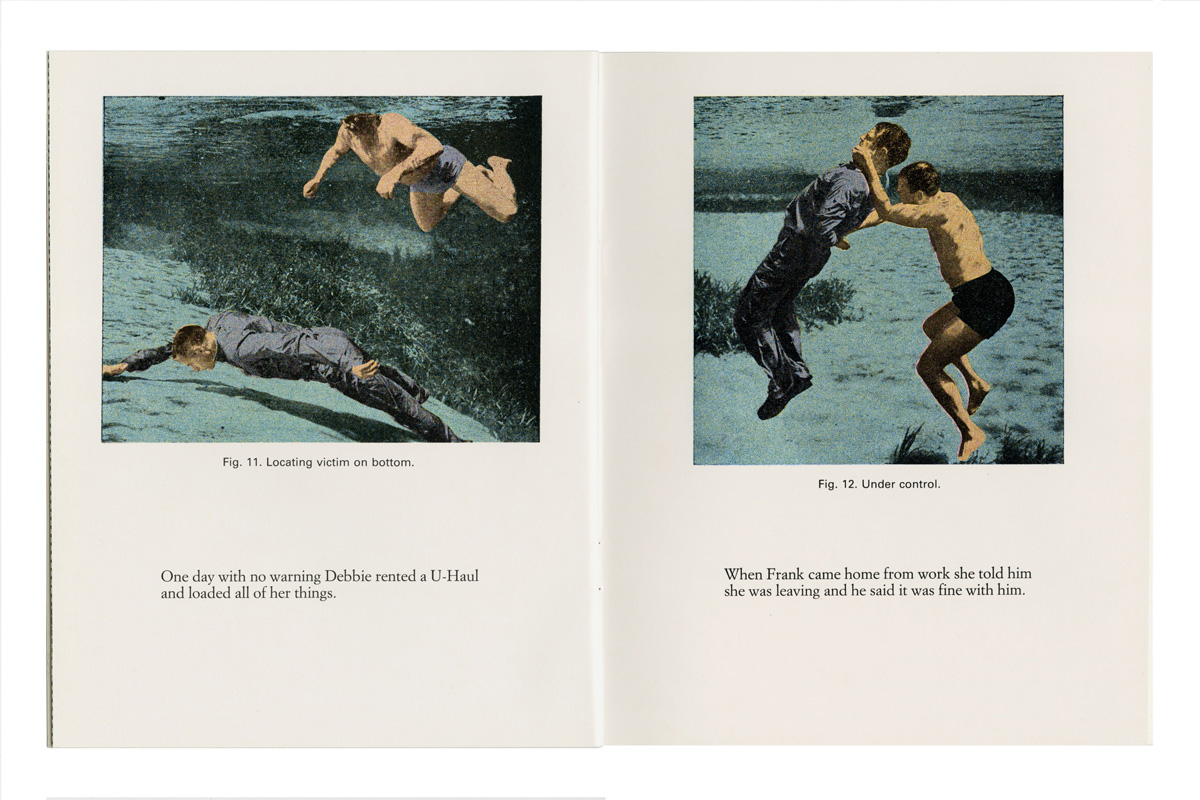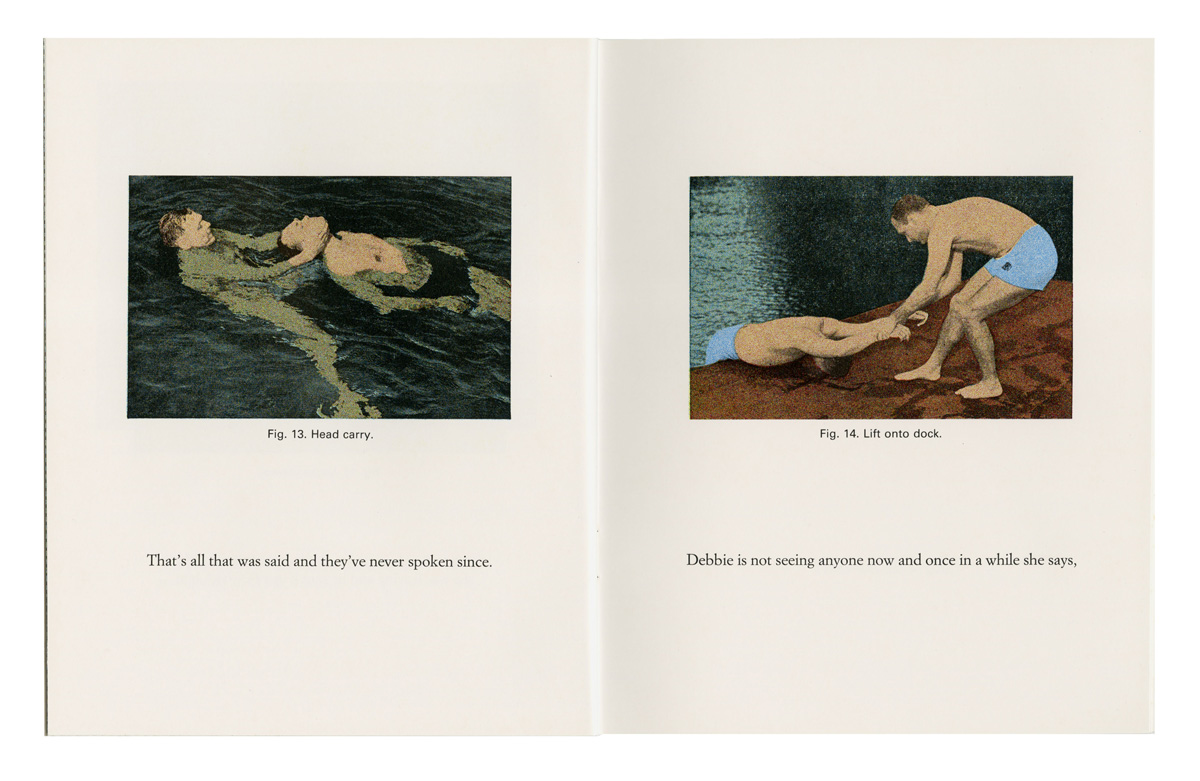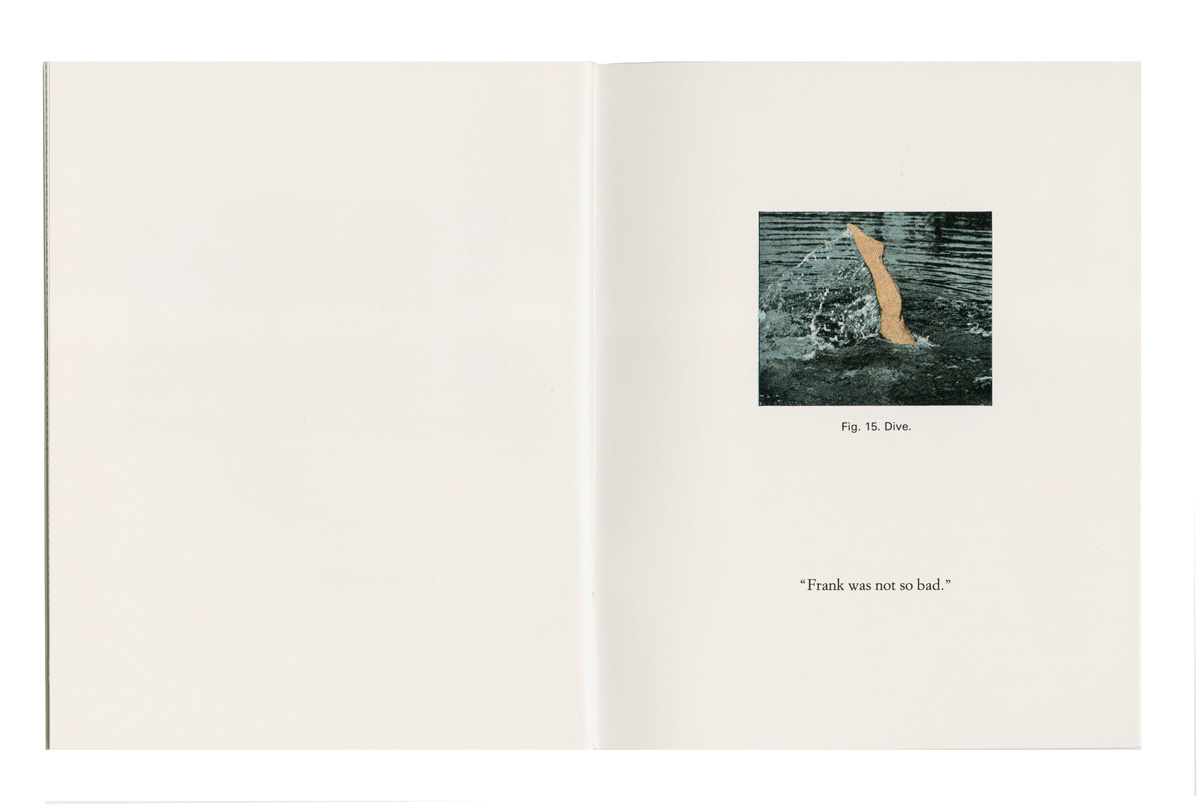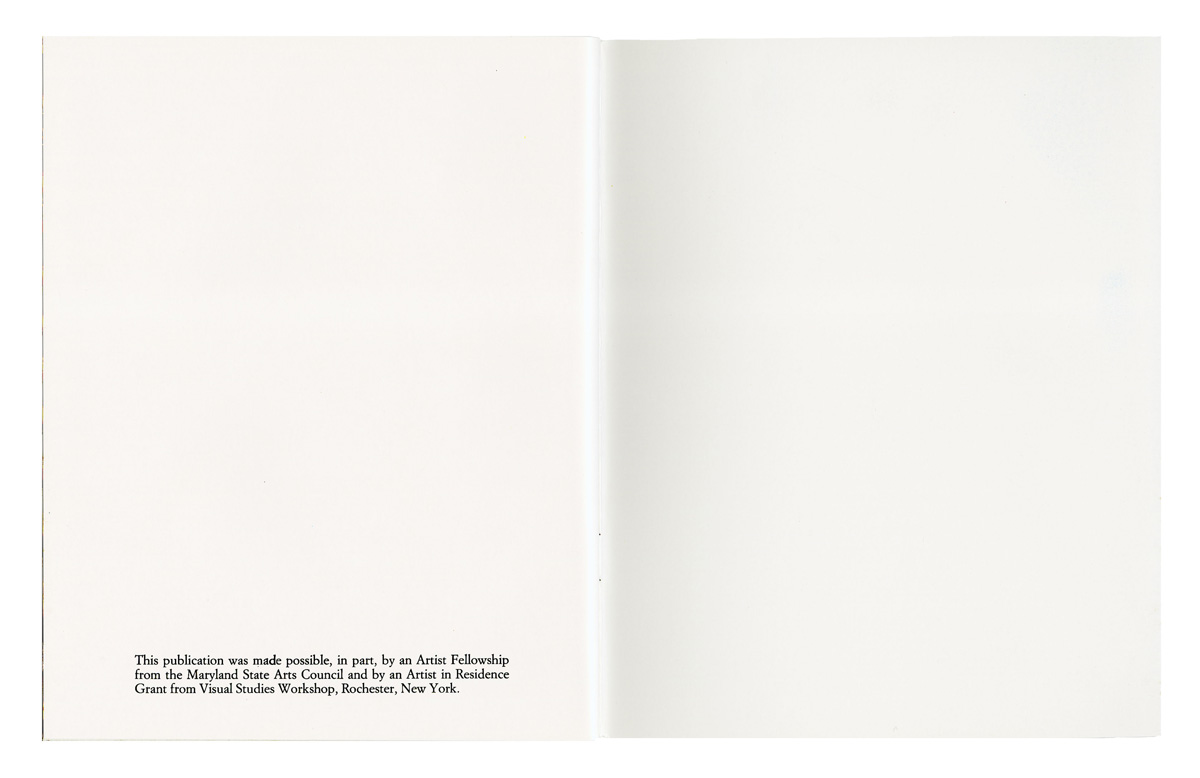Description
Water Safety is the fourth artist’s book in Fessler’s True Stories Series. All of the books in the series were written in 1982 and offset printed at a later date. In this story, relationships are equated with water. Characters dive in but can suffocate and drown if they are not careful.
The book begins with an introduction entitled Personal Safety in Swimming that makes it clear that people must learn to take care of themselves. As with all of books in her True Stories Series, Fessler appropriates and edits titles, text, and images from instructional manuals. These elements are used to illustrate a true story about a couple in a romantic relationship. Often the images and storyline seem at odds with each other, but they eventually merge and readers begin to see personality and emotion in the faces of the anonymous characters. Unlike previous books in the series, which paired only image and text, Water Safety utilizes three elements—image, caption, and story—on each page.
We follow the story of Debbie and Frank who both seem to enter into a relationship for the wrong reasons. We follow Debbie’s emotional progress as she gradually grows to dislike Frank but doesn’t know how to leave him or where to go. She eventually musters the courage to leave him, but in the end it is not clear if she has learned anything from the experience. The story is intended to be both sad and funny. As readers laugh they may recall relationships from their past and see a bit of themselves in Debbie or Frank.
Information
Water Safety, by Ann Fessler, 1982, 1989; True Stories Series, Book #4
Published by Visual Studies Workshop Press, Rochester, NY, 1989
Water Safety was made possible through an Artist in Residence Grant from Visual Studies Workshop Press, and an Artist Fellowship from the Maryland State Arts Council.
The Artist in Residence Grant provided Fessler with the opportunity to spend one month at the press and to be involved in the pre-press work required to prepare the book for 4-color printing.
A note about the pre-press work for Water Safety
The pre-press work for Water Safety involved a lengthy experimental process. The original images were black and white halftones. Fessler created full color images by developing a set of 9 mezzotint screens that varied in density by 10%. She hand cut masks to isolate the area of each color on every image. When the printing plates were exposed, a mezzotint screen was used between the mask and the plate to create the right percentage of each color ink—cyan, magenta, and yellow. The black halftone image was printed last, on top of the color shapes.
This hand process antedates the use of computers for pre-press work. The masks were made by cutting rubylith material with an Exacto blade. The negatives and masked shapes were stripped into flats (large sheets of opaque material) for exposure onto printing plates. Four plates (cyan, magenta, yellow, and black) with four corresponding press runs were required for the front and the back of each press sheet. The press sheets, with multiple pages on each side, were later folded, trimmed, and bound.


